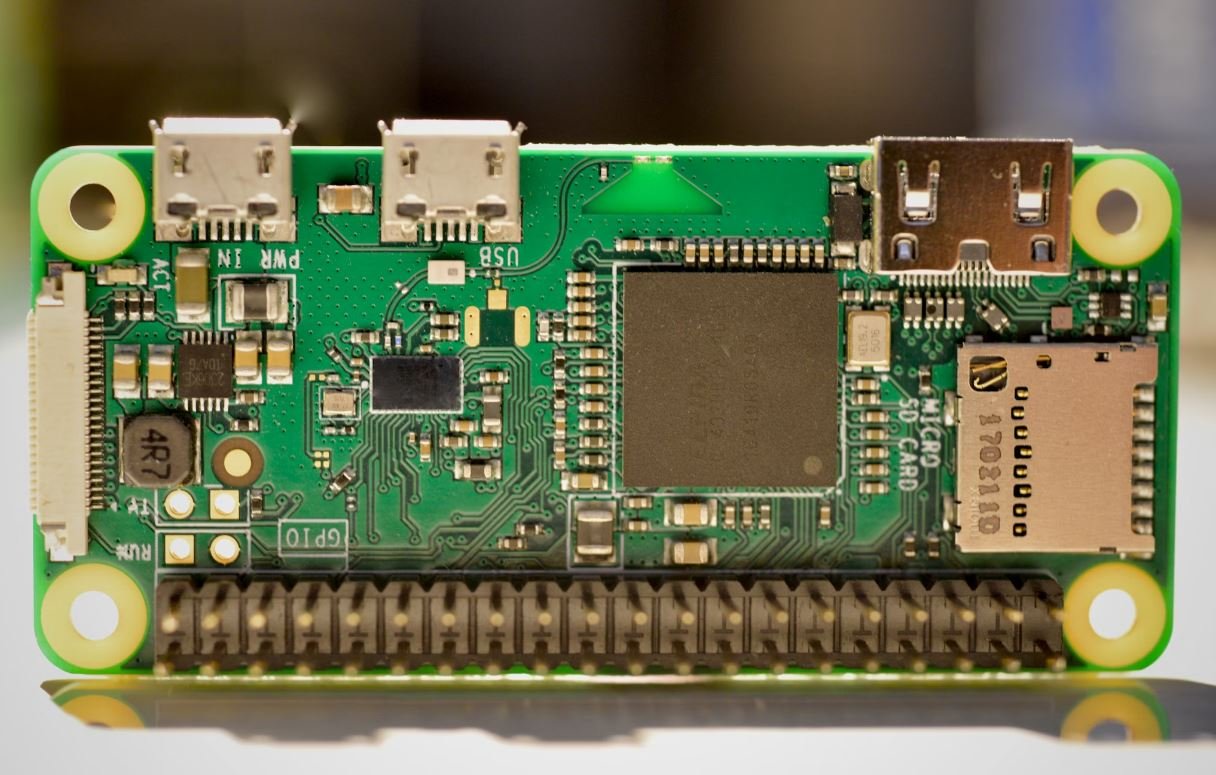What Is Data Mining in Machine Learning
Data mining is an integral part of machine learning that focuses on discovering useful information and patterns from large volumes of raw data. It involves various techniques and algorithms to extract knowledge and insights that can aid decision-making processes. By analyzing large datasets, data mining allows organizations to identify hidden patterns, correlations, and trends that may not be immediately apparent. This article provides a comprehensive overview of data mining in the context of machine learning.
Key Takeaways
- Data mining is a subset of machine learning that involves extracting patterns and knowledge from large datasets.
- It utilizes various algorithms and techniques to discover hidden patterns and relationships in data.
- Data mining is widely used in industries such as marketing, finance, healthcare, and more.
Understanding Data Mining
Data mining involves the process of exploring and analyzing vast amounts of data to uncover meaningful patterns. This can be done using a combination of statistical analysis, machine learning algorithms, data visualization, and domain expertise. *With the ever-increasing availability of data, data mining has become an essential tool for businesses and organizations to gain insights and make informed decisions.
Data mining can be performed on various types of data, including structured, unstructured, and semi-structured data. It often involves the following steps:
- Data Collection: Gathering large volumes of data from various sources, including databases, log files, social media platforms, sensors, etc.
- Data Cleaning: Preprocessing the data to remove errors, duplicates, outliers, and other irrelevant or noisy data points that may impact the quality and accuracy of the mining results.
- Data Integration: Combining data from multiple sources to create a unified dataset that can be analyzed.
- Data Transformation: Converting the data into a suitable format for analysis, such as encoding categorical variables or scaling numerical features.
- Data Mining: Applying various algorithms and techniques to extract patterns and insights from the transformed data.
- Pattern Evaluation: Assessing the discovered patterns and determining their relevance and usefulness.
- Knowledge Presentation: Visualizing and presenting the mined knowledge in a meaningful and actionable way for decision-makers.
Data Mining Techniques
Data mining employs several techniques to extract patterns and relationships from data. These techniques can be categorized into supervised learning, unsupervised learning, and semi-supervised learning. *Supervised learning is a technique where a model is trained on labeled data to predict future outcomes. On the other hand, unsupervised learning does not rely on labeled data and aims to discover structures and patterns in the data. Lastly, semi-supervised learning uses a combination of labeled and unlabeled data to improve the accuracy of the models.
Some popular data mining techniques include:
- Association Rule Learning: Discovering relationships between items in a dataset, commonly used for market basket analysis.
- Clustering: Grouping similar data points together based on their characteristics or similarities.
- Classification: Assigning predefined labels to unlabeled data based on their features.
- Regression Analysis: Predicting continuous numerical values based on historical data.
Data Mining Applications
Data mining is used in various domains and industries, offering valuable insights and driving decision-making processes. *Here are some notable applications of data mining:
| Industry | Applications |
|---|---|
| Marketing |
|
| Finance |
|
| Healthcare |
|
The Benefits of Data Mining
Data mining offers numerous benefits that can significantly impact businesses and organizations. *Some of these benefits include:
- Better Decision-Making: By uncovering hidden patterns and relationships, data mining helps businesses make informed decisions and gain a competitive edge.
- Improved Efficiency: By analyzing large datasets, data mining identifies inefficiencies and suggests optimizations that lead to improved operational efficiency.
- Enhanced Customer Satisfaction: Understanding customer behavior and preferences through data mining allows businesses to personalize customer experiences and tailor their offerings accordingly.
Overall, data mining plays a vital role in machine learning by enabling the extraction of valuable insights and patterns from large datasets. It empowers organizations across various industries to make informed decisions, optimize processes, and enhance customer experiences. From marketing to finance and healthcare, the applications of data mining are diverse and far-reaching. By harnessing the power of data mining, businesses can unlock hidden opportunities and gain a competitive advantage in today’s data-driven world.

Common Misconceptions
Data Mining in Machine Learning
There are several common misconceptions surrounding the topic of data mining in machine learning. These misconceptions can often lead to confusion and misunderstandings about what data mining actually entails. By addressing and debunking these misconceptions, we can gain a clearer understanding of this important aspect of machine learning.
- Data mining is only about extracting data
- Data mining is a one-time process
- Data mining is a threat to privacy
One common misconception is that data mining is solely about extracting data. While data extraction is a part of the process, data mining goes beyond simple extraction. It involves analyzing and discovering patterns, relationships, and insights within a dataset. Data mining techniques are used to uncover hidden patterns and information that can support decision-making processes.
- Data mining requires expensive software
- Data mining can solve any problem
- Data mining replaces human expertise
Another misconception is that data mining is a one-time process. In reality, data mining is an ongoing process that requires constant monitoring, updating, and refinement. It involves continually collecting and analyzing new data to adapt and improve models and predictions. Data mining is a dynamic and iterative process that adds value to machine learning algorithms over time.
- Data mining can only be done by experts
- Data mining is always accurate
- Data mining is an end in itself
There is a misconception that data mining poses a threat to privacy. While it is true that data mining can involve analyzing personal data, responsible data mining practices prioritize privacy protection. Techniques such as anonymization and aggregation are employed to ensure that individual identities are protected while still enabling meaningful insights to be derived from the data.
- Data mining is not related to other fields
- Data mining is just about collecting as much data as possible
- Data mining can replace domain knowledge
Another misconception is that data mining requires expensive software. While there are certainly advanced tools and software available for data mining, there are also open-source and free alternatives that can be used for basic data mining tasks. Additionally, many machine learning frameworks provide built-in data mining capabilities, making it accessible to users without specialized software.
Lastly, data mining is often mistakenly believed to be a process that can solve any problem. While data mining techniques are powerful and can uncover valuable insights, they are not a one-size-fits-all solution. The success of data mining relies on the quality and relevance of the data, as well as the expertise and domain knowledge of the individual applying the techniques.

Data Mining Statistics
Data mining involves extracting useful information from large datasets. The following table showcases some interesting statistics related to data mining:
| Statistic | Value |
|————————————|—————-|
| Number of data mining algorithms | 100+ |
| Amount of data generated daily | 2.5 quintillion gigabytes |
| Percentage of companies using data mining | 60% |
| Predictive accuracy of data mining models | 85% |
| Annual revenue generated by data mining industry | $20 billion |
| Average salary of a data mining specialist | $90,000 per year |
| Year data mining become popular | 1990s |
| Number of companies specializing in data mining | 500+ |
| Industries benefitting from data mining | Finance, healthcare, retail, telecom |
| Current growth rate of data mining industry | 10% annually |
Data Mining Techniques
Data mining employs various techniques to extract information effectively. This table outlines some popular techniques used in data mining:
| Technique | Description |
|—————————|———————————————————|
| Classification | Divides data into predefined classes or categories |
| Clustering | Groups similar data points into clusters |
| Regression | Predicts continuous numerical values |
| Association | Discovers relationships between variables |
| Outlier detection | Identifies rare or abnormal data points |
| Sequential pattern mining | Finds patterns in sequential data (e.g., time series) |
| Neural networks | Analyzes complex relationships through interconnected nodes |
| Decision tree | Constructs a tree-like model for decision-making |
| Text mining | Extracts information from unstructured text data |
| Web mining | Extracts valuable patterns from web data |
Applications of Data Mining
Data mining has revolutionized multiple domains, providing valuable insights. The table below presents some noteworthy applications of data mining:
| Application | Description |
|——————–|——————————————————————————————-|
| Fraud detection | Identifies suspicious patterns or transactions to prevent fraudulent activities |
| Customer segmentation | Divides customers into distinct groups based on behavior, demographics, or preferences |
| Health monitoring | Analyzes medical records to predict diseases, improve treatment, and optimize healthcare |
| Market basket analysis | Uncovers relationships between products to optimize sales and promotions |
| Sentiment analysis | Evaluates public opinion from social media, reviews, or other text data |
| Predictive maintenance | Forecasts equipment failures to schedule repairs and minimize downtime |
| Personalized recommendations | Offers tailored suggestions based on user preferences and behavior |
| Supply chain optimization | Enhances efficiency by optimizing inventory management, logistics, and distribution |
| Risk assessment | Evaluates potential risks and predicts future outcomes to guide decision-making |
| Image recognition | Identifies objects, faces, or patterns in images for applications like facial recognition |
Data Mining Tools
A variety of tools and software are available to aid in data mining tasks. Check out the following table for some popular data mining tools:
| Tool | Features and Benefits |
|————————|——————————————————————|
| R | Effective for statistical analysis and modeling |
| Python (with libraries)| Offers a wide range of packages for data manipulation and mining |
| SAS Enterprise Miner | User-friendly interface with a drag-and-drop feature |
| KNIME | Provides a visual programming environment for seamless workflow |
| RapidMiner | Offers a powerful data preprocessing and visualization suite |
| IBM SPSS Modeler | Enables advanced predictive modeling and decision optimization |
| Weka | A collection of machine learning algorithms with a GUI interface |
| Orange | User-friendly tool with visual programming and prototyping |
| MATLAB | Ideal for exploratory data analysis and data visualization |
| Tableau | Facilitates data exploration and interactive visualizations |
Data Mining Challenges
Data mining is not without its challenges. The table below highlights some obstacles faced in the field:
| Challenge | Description |
|—————————-|——————————————————————|
| Data privacy | Protecting personal or sensitive information during mining |
| Data quality | Ensuring accuracy, completeness, and reliability of the data |
| Scalability | Handling large datasets efficiently and effectively |
| Algorithm complexity | Developing and implementing complex algorithms for accurate mining |
| Lack of domain expertise | Requiring subject knowledge for effective interpretation |
| Interpretability of results | Understanding and explaining the outcomes of data mining |
| Ethical considerations | Addressing potential bias, discrimination, or misuse of results |
| Computational complexity | Handling the computational load of complex algorithms |
| Constantly evolving techniques | Keeping up with advancements and new methodologies |
| Regulatory compliance | Adhering to legal and ethical regulations regarding data usage |
Data Mining in the Future
Data mining is continually advancing, unlocking new opportunities. This table showcases some possibilities for the future:
| Future Aspect | Description |
|—————————-|————————————————————————————————————————–|
| Deep learning | Utilizing neural networks with multiple layers for advanced pattern recognition and prediction |
| Real-time data mining | Extracting insights from data streams continuously, enabling immediate decision-making and proactive responses |
| Blockchain data mining | Analyzing data stored in blockchain networks for improved transparency, security, and accuracy |
| Internet of Things (IoT) | Expanding data mining applications to connected devices, enabling better decision-making and automation |
| Augmented reality (AR) | Combining data mining with AR to enhance user experiences, personalization, and provide real-time relevant information |
| Quantum data mining | Harnessing the power of quantum computers to accelerate data mining algorithms and handle complex computations |
| Prescriptive analytics | Combining predictive analytics with optimization techniques to suggest the best course of actions for desired outcomes |
| Automated data preprocessing | Streamlining data preparation tasks, reducing manual effort, and improving efficiency in the data mining workflow |
| Privacy-preserving techniques | Developing methods to mine sensitive data without compromising individual privacy and confidentiality |
| Cognitive data mining | Integrating cognitive computing and AI with data mining to extract deeper insights and improved decision-making |
Data Mining Benefits
Data mining offers numerous benefits across different domains. See the table below for some key advantages:
| Benefit | Description |
|—————————–|——————————————————————————————————————-|
| Improved decision-making | Provides valuable insights for informed decision-making, reducing risks and increasing success rates |
| Cost reduction | Identifies cost-saving measures, minimizes unnecessary expenses, and optimizes resource allocation |
| Increased efficiency | Automates processes, reduces manual effort, and enhances productivity |
| Competitive advantage | Reveals hidden patterns, customer preferences, and market trends, enabling companies to stay ahead of rivals |
| Fraud detection and prevention | Identifies abnormal patterns, anomalies, and fraudulent activities, protecting businesses and customers |
| Enhanced customer satisfaction | Provides personalized experiences, recommendations, and targeted marketing campaigns to improve customer loyalty |
| Improved healthcare outcomes | Enables early disease detection, personalized treatments, and predictive modeling for better patient care |
| Scientific advancements | Empowers researchers to glean insights from large datasets, leading to breakthroughs in various scientific fields |
| Time saving | Accelerates data analysis and information retrieval, speeding up decision-making processes |
| Strategic planning | Supports efficient resource allocation, long-term planning, and risk management |
Data Mining and Machine Learning
Data mining and machine learning go hand in hand for extracting knowledge from data. This table showcases their relationship:
| Aspect | Data Mining | Machine Learning |
|—————————-|—————————————————-|————————————————-|
| Focus | Extraction of useful patterns and information | Development of models to make predictions |
| Purpose | Discovery and exploration of data insights | Training algorithms to learn and improve |
| Scope | Broader, encompasses various methodologies | Specific approach within the broader framework |
| Techniques | Utilizes a wide range of statistical algorithms | Primarily employs predictive modeling techniques |
| Goal | Uncovering valuable insights from existing data | Creating accurate models to make predictions |
| Role of data | Primary focus on existing structured datasets | Relies on data to learn and improve |
| Application | Identifying patterns, trends, and anomalies | Predicting outcomes, making future decisions |
| Data preprocessing | Involves cleaning, transforming, and integrating data | Prepares data for training models |
| Feedback loop | Often used for formulating business strategies | Reinforces learning through continuous feedback |
| Scalability | Handles large volumes of data | Scales algorithms to handle increasing data size |
| Examples | Market basket analysis, customer segmentation | Spam filters, recommendation systems, chatbots |
Data Mining Limitations
Data mining possesses certain limitations, which should be acknowledged. Check out the table below for an overview:
| Limitation | Description |
|———————————-|—————————————————————————————————-|
| Incorrect or biased results | Inaccurate patterns may emerge due to flaws in data quality, biases in the dataset, or algorithms |
| Overfitting | Models may become too specific to the training data, leading to poor generalization on new data |
| Lack of causality inference | Data mining reveals associations and correlations but doesn’t provide insights into causal relationships |
| Data ownership and accessibility | Gathering relevant data can be challenging due to data privacy, legal restrictions, or proprietary concerns |
| Computationally intensive | Performing data mining on large datasets can be resource-intensive, requiring substantial computing power |
| Time-consuming processes | Data cleaning, preprocessing, and feature selection can be time-consuming, delaying insight generation |
| Interpretation and visualization | Understanding and communicating complex mining results may present difficulties |
| Changing data dynamics | Data characteristics may evolve over time, rendering previously derived patterns irrelevant |
| Human intervention required | Expertise is often necessary to interpret results, validate findings, and apply domain knowledge |
| Ethical considerations | Safeguarding privacy, avoiding bias, and ensuring ethical use of data present ongoing challenges |
Conclusion
Data mining is a powerful technique for extracting valuable insights from large datasets. Its applications span various fields, including finance, healthcare, and retail. By employing a range of techniques and tools, data mining uncovers hidden patterns, predicts future outcomes, and supports informed decision-making. However, challenges like data privacy, algorithm complexity, and ethical considerations must be addressed. Looking to the future, data mining has the potential to leverage deep learning, real-time analysis, and innovative technologies to unlock even greater opportunities. As data mining continues to evolve, its benefits and limitations serve as important considerations in harnessing the full potential of this invaluable tool.
Frequently Asked Questions
What is data mining in machine learning?
Data mining in machine learning refers to the process of extracting useful patterns or insights from a large amount of data. It involves discovering hidden patterns, relationships, and trends and using them to make predictions or solve complex problems.
How does data mining work?
Data mining in machine learning involves several steps. First, the data is collected from various sources and then cleaned and preprocessed to remove noise and inconsistencies. Next, appropriate algorithms are applied to the data to identify patterns and relationships. The patterns are then validated and interpreted to extract meaningful insights or to make predictions.
What are the key benefits of data mining?
Data mining has various benefits in machine learning. It can help in identifying hidden patterns and trends that are not readily apparent, enabling organizations to make informed decisions. It also aids in predicting future outcomes and improving business processes. Additionally, data mining can be used for fraud detection, customer segmentation, market analysis, and recommendation systems.
What are some popular data mining algorithms?
There are several popular data mining algorithms used in machine learning, including decision trees, k-nearest neighbors, support vector machines, random forests, and neural networks. Each algorithm has its own strengths and weaknesses and is suitable for different types of data and problem domains.
What are the ethical considerations in data mining?
Data mining raises ethical concerns, particularly regarding privacy and data protection. The use of sensitive personal data without proper consent or safeguards can infringe on individuals’ rights. It is essential to ensure that data mining practices comply with relevant privacy laws and regulations and that appropriate measures are taken to secure and anonymize the data.
What challenges are associated with data mining?
Data mining faces challenges such as data quality issues, including missing or inconsistent data. It can also be challenging to select the right algorithms and parameters for a given problem. Additionally, handling large datasets and extracting meaningful insights from them can be computationally intensive and time-consuming.
How is data mining different from data analysis?
Data mining and data analysis are closely related but distinct concepts. Data analysis focuses on summarizing and visualizing data to gain insights and understand patterns. On the other hand, data mining involves using algorithms and techniques to discover previously unknown patterns or relationships in the data.
What industries benefit from data mining?
Data mining is valuable in various industries, including finance, healthcare, retail, marketing, and telecommunications. It can be used to detect fraudulent activities, predict customer behavior, optimize marketing campaigns, support clinical decision-making, and improve supply chain management, among other applications.
What skills are needed for data mining in machine learning?
Data mining in machine learning requires a combination of technical and analytical skills. Proficiency in programming languages like Python or R is necessary to implement data mining algorithms. Additionally, a strong understanding of statistical techniques, data preprocessing, and data visualization is essential for effective analysis and interpretation of the results.
What is the future of data mining in machine learning?
The future of data mining in machine learning looks promising. With the exponential growth of data and advancements in computing power, data mining techniques will play a crucial role in extracting valuable insights from large and complex datasets. As machine learning algorithms improve and become more sophisticated, data mining will continue to drive innovation and enable intelligent decision-making in various fields.




